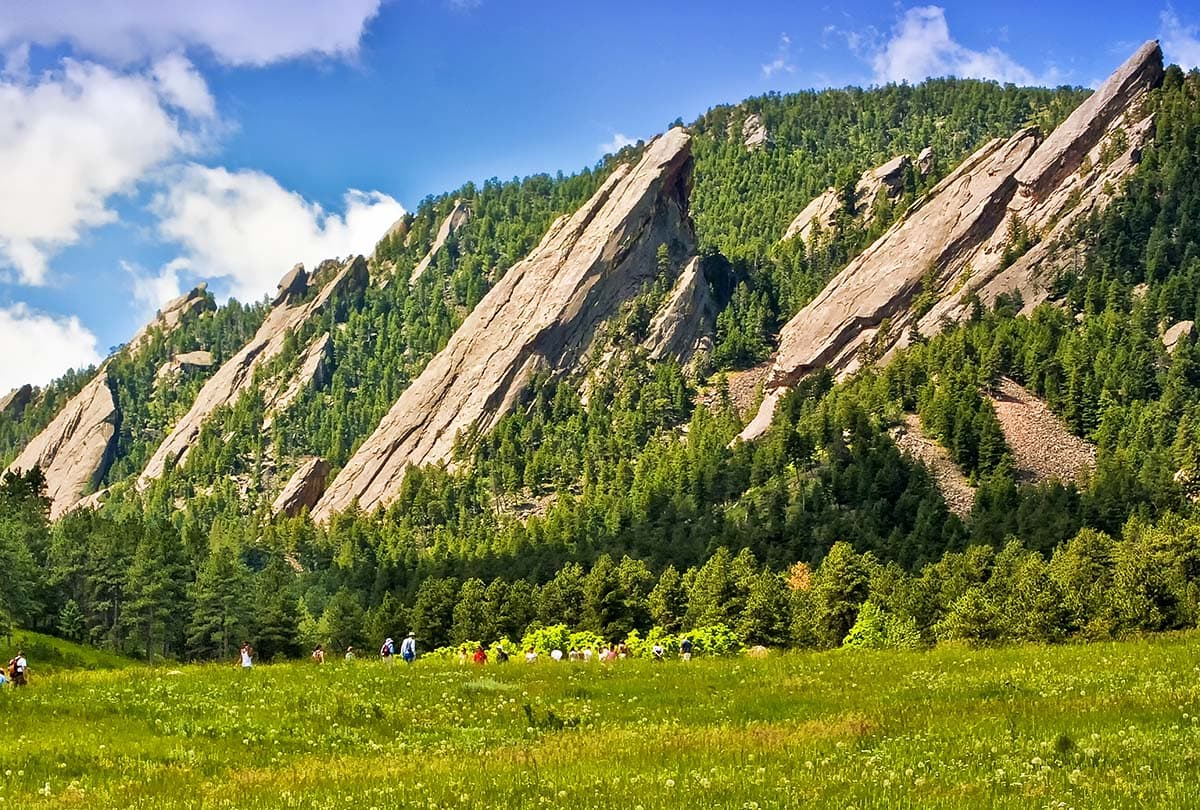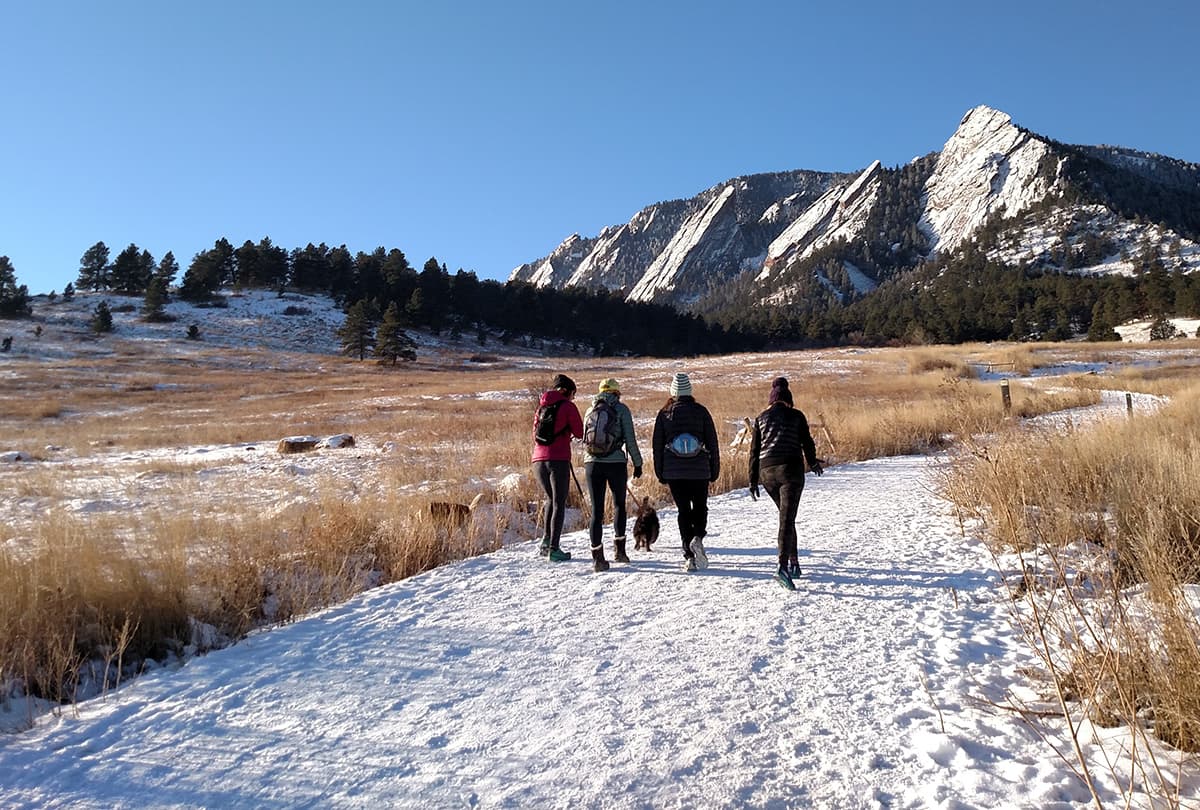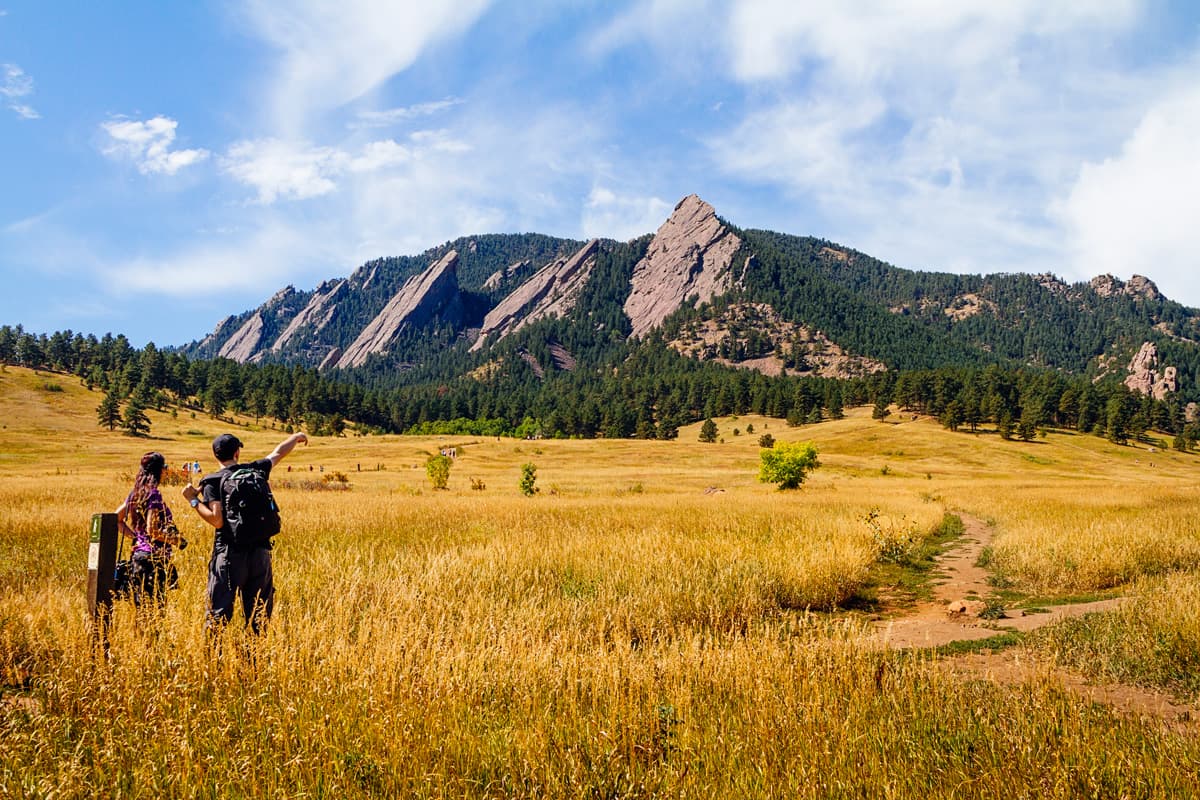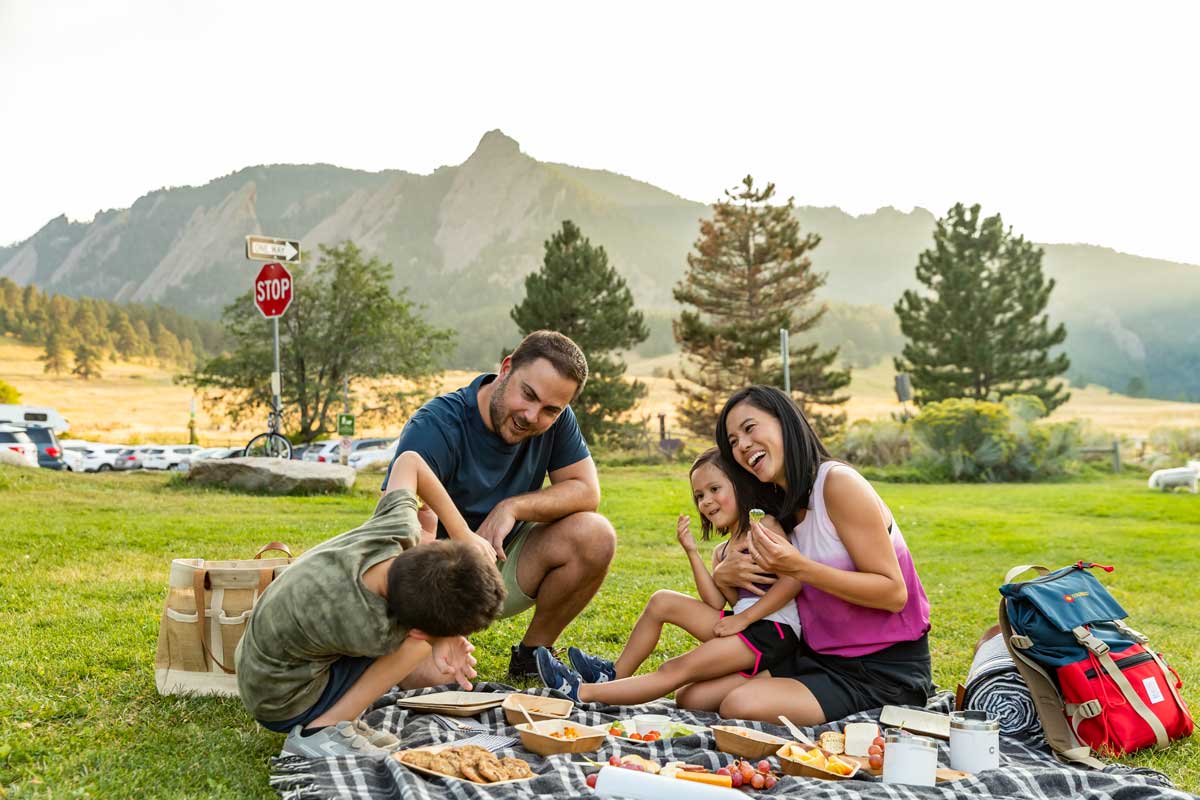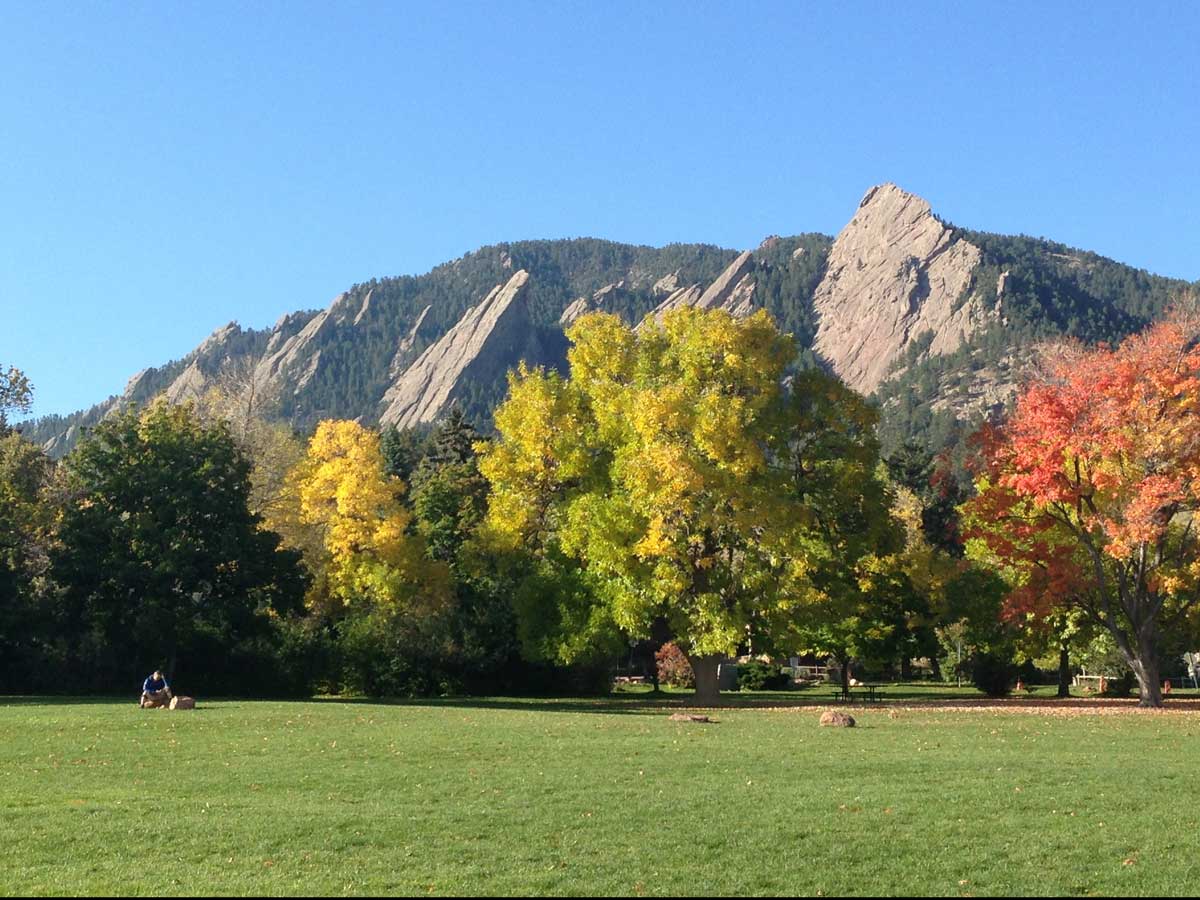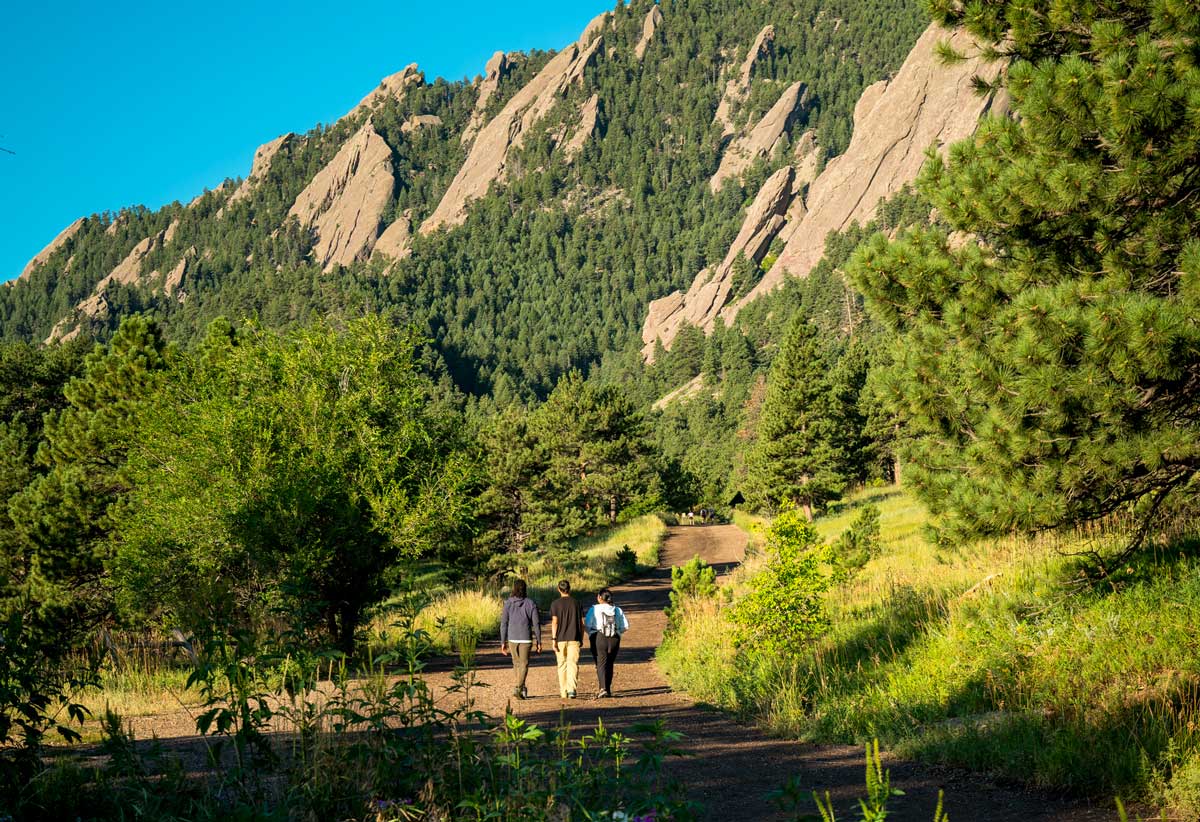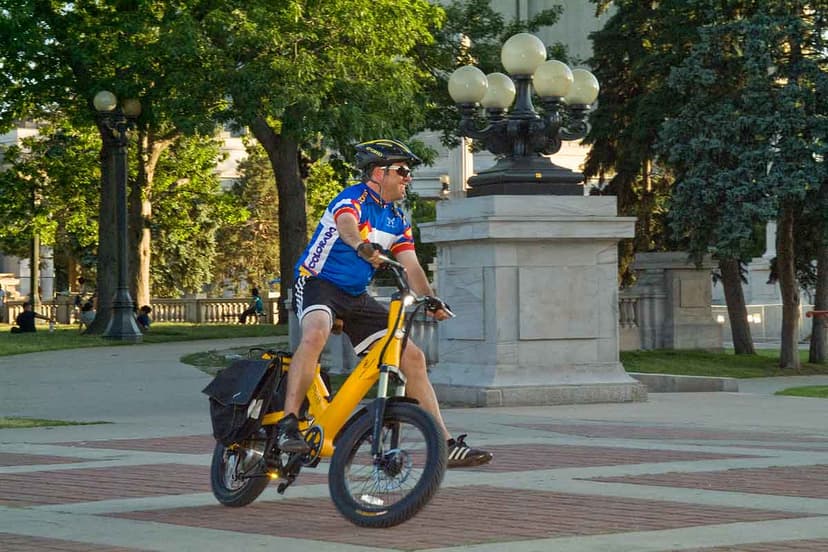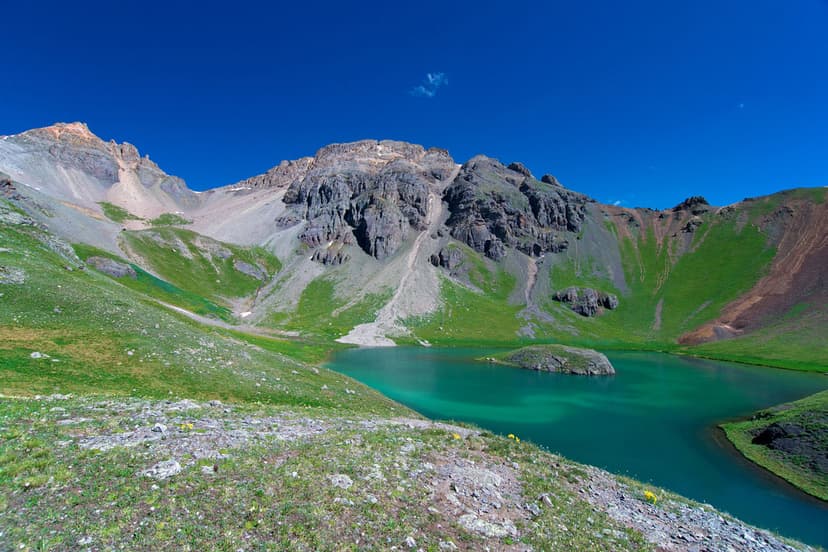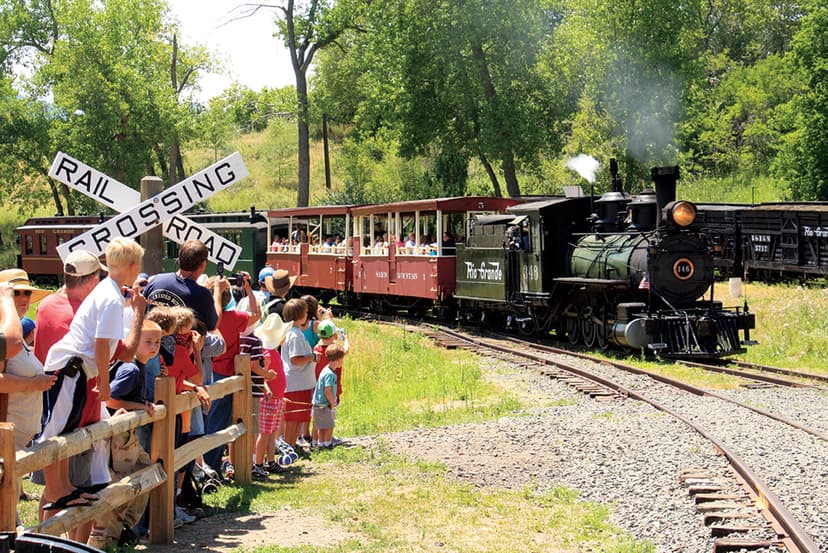Whether frosted with snow, cloaked in fog, or glowing warm and red under sunny skies, the Flatirons offer the quintessential Boulder view. Once you snap a few shots of them from afar, head toward the foothills to explore them up close. You can help protect their natural beauty by remembering these Leave No Trace Principles.
3 Ways to Explore the Flatirons
The Flatirons belong to the more than 45,000 acres of Boulder’s protected Open Space & Mountain Parks, giving both locals and visitors extensive recreational access to these rocky towers (as well as providing habitat for wildlife ranging from squirrels and rabbits to bats and falcons to bears and even mountain lions). Here are our three favorite ways to explore them:
1. On Foot
Plenty of trails will take you around and up to the Flatirons, and many of them start from the Chautauqua Trailhead, off Baseline Road. Please allow adequate time for parking, as this can be very a busy area.
For an easy-to-moderate hike, take the 2-mile Flatirons Loop Trail, winding through the forest beneath the Flatirons. Or up the ante by continuing along the strenuous, 3-mile Royal Arch Trail, which ends at a natural rock arch with awe-inspiring views of Boulder and its surroundings.
Another option is the hike to Woods Quarry, where you’ll get a view into the site of a historical sandstone quarry, plus enjoy a spectacular view from the stone benches that were assembled by some industrious visitors. These trails travel through ponderosa pine forest, over rocky scree fields, and across open fields, offering various views of the Flatirons and Boulder along the way.
2. On the Ropes
The best way to get up close and personal with the Flatirons? Climb them! The First and Third Flatirons offer some of the most popular multi-pitch rock climbing routes in the area (and country!). The trail to the First Flatiron climbing access can be challenging, but you’ll be rewarded with long, varied climbs that range from about four to 10 pitches.
The popular Third Flatiron, which offers even more routes, is usually closed to climbers and hikers from early February to late July to protect nesting raptors. Over the years, climbers have scaled the Third Flatiron while wearing roller skates, under the full moon without headlamps, and even while completely naked! But maybe save that for your next trip.
3. On the Lawn
Not feeling up to a hike or climb? You can still get your fill of the Flatirons — while filling your belly. Pack a picnic (we recommend buying your provisions at the Boulder Farmers Market on Wednesday evening or Saturday morning) and spread out a blanket on the grassy lawn at Chautauqua Park. This is the perfect spot to enjoy a meal beside the Flatirons while watching the parade of people (and their pooches) heading up the hill for a hike. Afterward, you can hit the tennis courts, take the kids for a spin around the playground or catch a show at Chautauqua Auditorium.
Headed to the Chautauqua area on a summer weekend to hike among the Flatirons? Ride the free weekend shuttle to get there stress-free and avoid parking fees. Here's all the information on the Park-to-Park hiker shuttle, which runs weekends Memorial Day to Labor Day.
